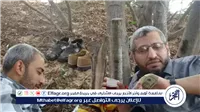The most important archaeological sites in the city of Marsa Alam، south of the Red Sea، “Wadi Sket

Wadi Sakit area is considered one of the valleys of the Aydhab Desert located in southern Egypt. The archaeological area is located west of the Wadi El Gemal Reserve، south of the city of Marsa Alam in the Red Sea Governorate. It is located approximately 48 km east of the Qift al-Qusayr Road، where it was one of the stops for ancient Pharaonic trade caravans.
The area was exploited by the Pharaohs in various mines in this region because it contains precious stones. The Pharaohs discovered there the pyramid-shaped emerald gemstone and extracted large quantities of it. They built a temple to Horus، but nothing remained of it as the days passed.
When the Romans came، they used that area to extract the emerald stone from the same place، and they built a miniature temple with it in the middle of the mountain called the Roman Temple of Sket or Serapis. It is said to be similar to the Pharaonic story of Isis and Osiris، and it was also known that the Romans were imitating the Pharaohs.
The temple is carved from the rocks of the region، which are of the highest quality rocks (serpentinite and talc). It is located at a depth of 50 km from the beginning of Wadi El Gemal. The temple was established for Roman workers to serve as places of worship near their homes، as ruins of stone workers’ homes are spread around the temple. The temple was established within a concave fold as the geological formationThe rocks of the area are a succession of a group of concave and convex folds.In 2003 AD، a Dutch mission with multiple nationalities came to explore that area. The mission conducted research and studied the area. They also conducted some excavations and excavations for everything that was present in the area in order to identify and develop a complete vision of the details of the area and how it was used.
Until the early 1980s، lions، tigers، ostriches، and other animals lived in the area، which no longer live there now due to the drought that occurs there during the summer







